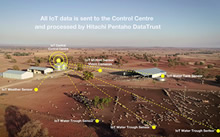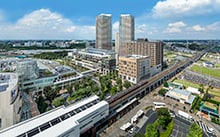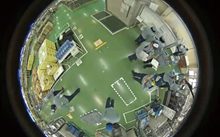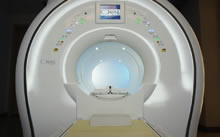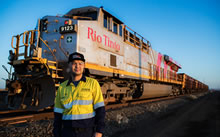Saudi City, Jeddah is home to 9000 Saudi Airline employees.
The compound maintains a lush green oasis by recycling and reusing water from the various accommodations, offices and shops within its borders. After twenty five years of use, the sewage treatment facility had become outdated and inefficient. Hitachi’s engineers and construction team were able to work around existing plumbing and mechanics to create a new facility capable of recycling 6000 m3 of water per day, keeping trees, flowers and sports fields thriving.
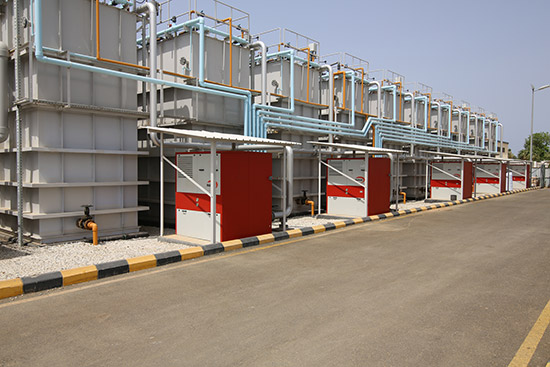
From the beginning Saudi Real Estate and Development (SARED) was very clear about what needed to be done. The dated plant and settling pond covered a considerable amount of land. The pond created a breeding ground for mosquitos and the general openness of plant equipment lead to bad smells contaminating the surrounding areas. Water quality was also a concern and the design developed with the client would have to be built while the old plant continued to run.
Managing all aspects of engineering, procurement and construction, Hitachi also had to ensure several contingency plans where emplace. Contingency plans needed to address any momentary interruptions to sewages services as construction called for the moving of various pipes and fittings, but did not have to execute any of them as they were able to schedule new assemblies with pipe movement of the old operation.
Together Hitachi and SARED chose the MBR units for there enclosed operation, compact size and transportability. The collaborative design can be moved if city planning dictates the facility grounds need to be reconstituted for other uses.
The system built ensures water quality through intense filtration of grit, grease and heavy solids down to 1 to 2 millimeters in dynamiter. From there reclaimed water is aerated and oxidized to remove microorganisms. In the aeration tanks the water passes through the MBR units with a pore size of 0.1 micron. This process removes the last of the suspended solids, along with bacteria such as coliform. Water is then dosed with disinfectant sodium hypochlorite (NaOCI) before being pumped into one of the two holding tanks. The two enclosed holding tanks replace the settling pond which eliminates insect reproduction and smell.
During the construction phases one unknown problem presented itself. The design called for two 3,000m3 treated water storage tanks. The land would not support the weight of these tanks when full. Hitachi’s team studied the problem and remedied it by digging 3.5 meter holes which would be back filled with rammed earth and topped with MAT foundations. The tanks where then built upon these fortified footings.
Hitachi’s team worked in co-creation with the client through all aspects of the process, solving past problems and delivering a product that can continue to grow and evolve with the city it serves.
Over a year ago the new plant was delivered to the customer and put into operation. Even with this success, Hitachi continues to look for ways to improve this project through the implementation of its Social Innovation business. Currently the company is looking to solve network leakage issues within the irrigation system, and to better manage preventative maintenance.
Further into the future, Hitachi and SARED will study better ways to utilize the solid waste produced by the city. Currently, dewatering the sludge is the safest and most effective way for the facility to handle this by-product. Dewatering creates a cake that is disposed of in local landfill. Considerations will be given to processing the sludge into a viable fertilizer, or soil additive.
We look forward to working with other companies globally in the methodology of co-creation. Hitachi believes that bringing stakeholders directly in the development process will generate swift and effective results.
Solutions By: Hitachi, Ltd., Water Business Unit
